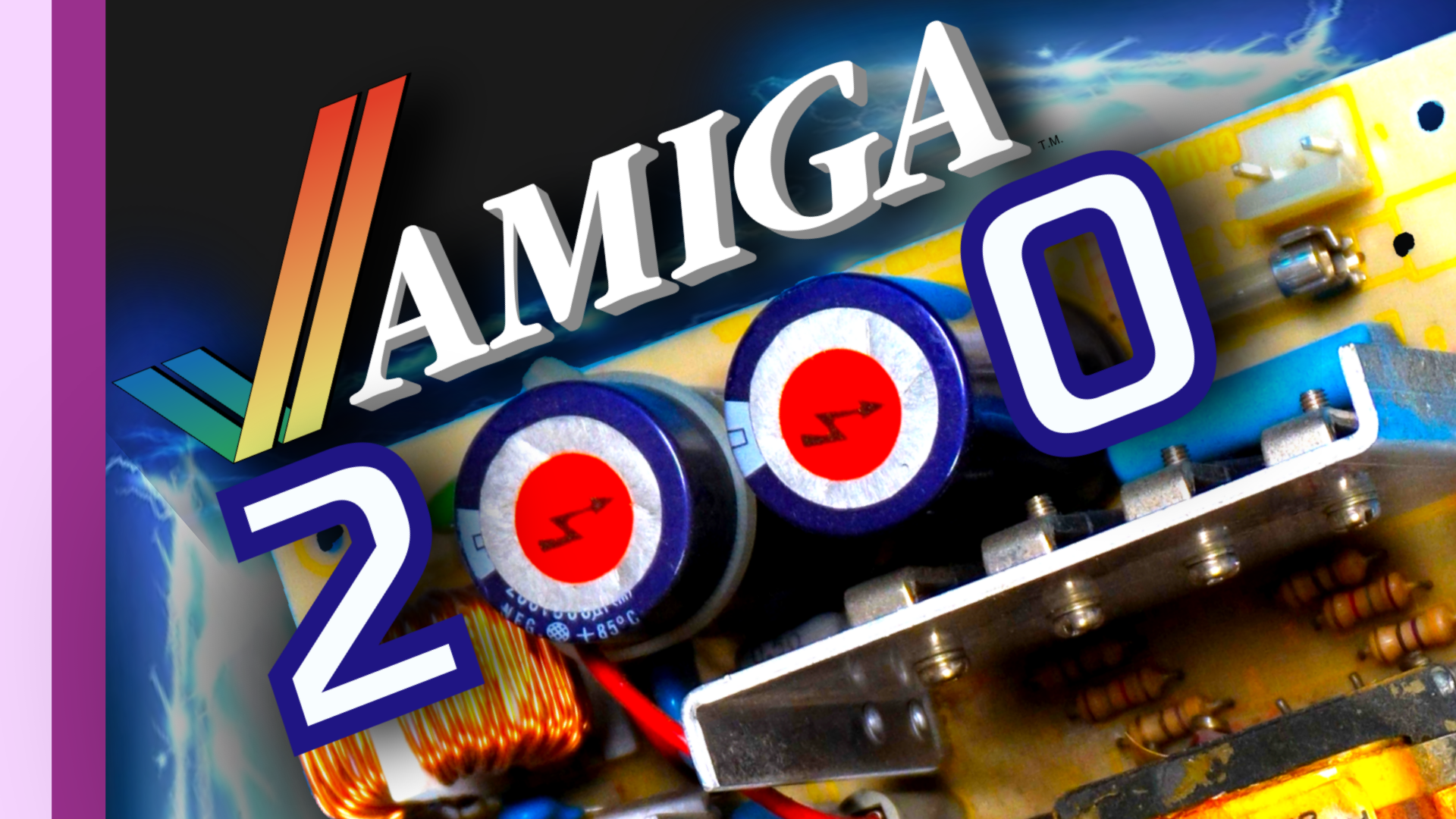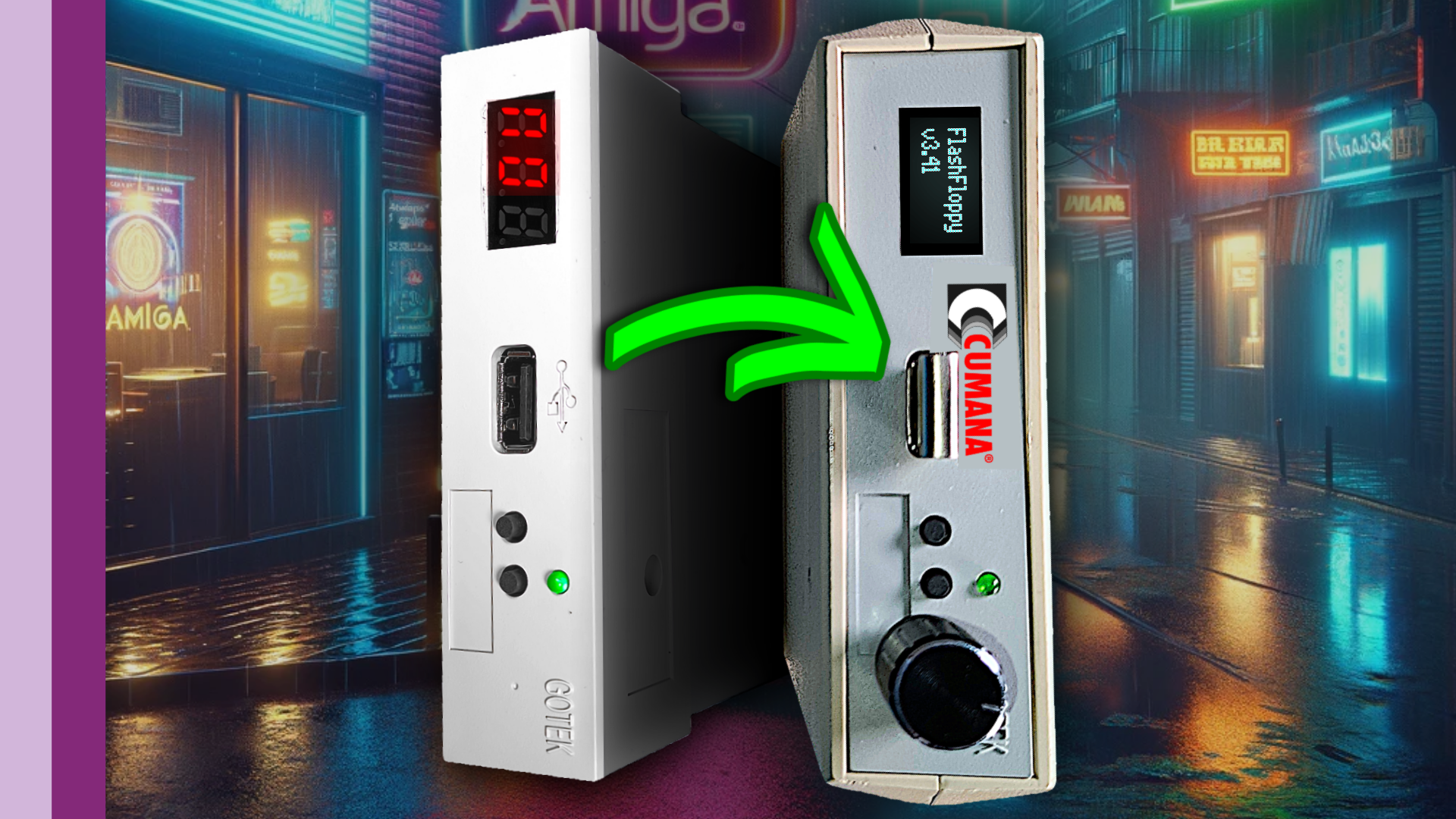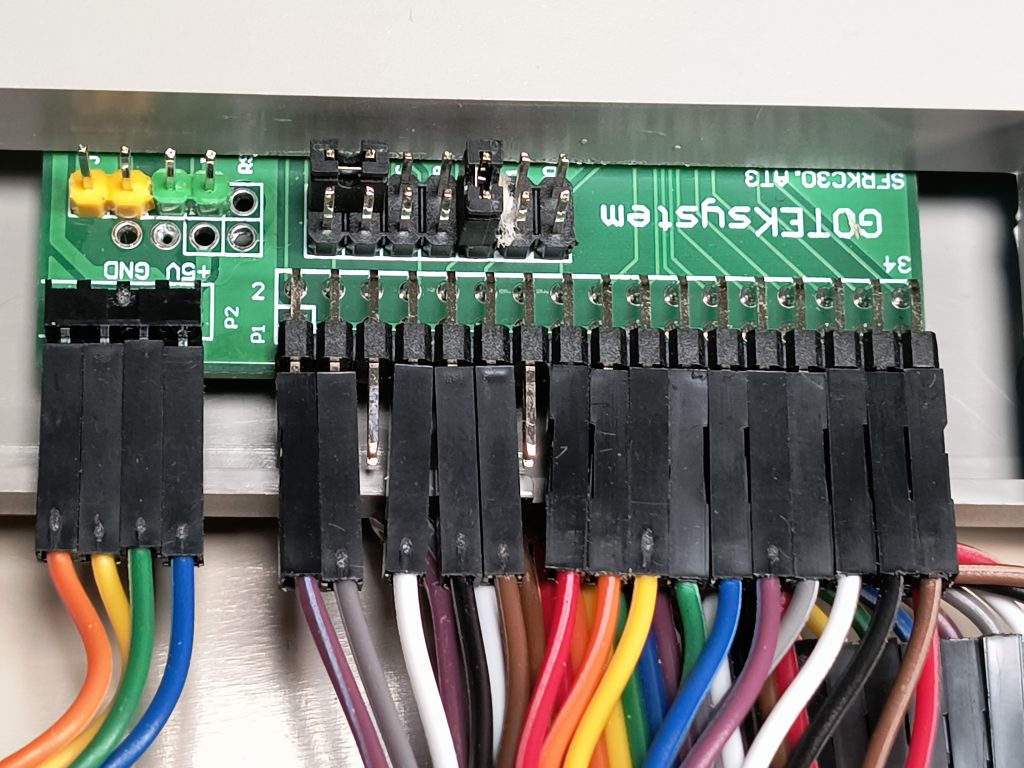What you see on the bench now is a working ETX-form Amiga 2000—but to understand how we got here, we need to rewind a bit. This strange little tale really begins when I picked up the board from Cathers in Cambridge.

The First Setup
Fresh back from Cambridge, I wired it up with a ROM switcher—technically meant for an A600. Not the perfect fit, I’ll admit, but it had all the Kickstart images I needed to investigate the problem for myself. That issue? Something was seriously wrong with the display—especially under Kickstart 2.0 or higher. The colors were just… off. Glitching, corruption, odd effects during animation. It was like looking at a surrealist painting in the middle of Workbench.

Weirdly, Kickstart 1.3 ran fine. The game Grind even loaded up with no trouble—until the screen went totally bonkers once the game actually started.

The Investigation Begins
My first theory: maybe the problem lay in the blitz signal between Agnus and Gary. On the A500 and 500 Plus, this signal goes directly from Agnus to Gary. If that connection isn’t solid, all sorts of weirdness can ensue. I’ve seen it before.
But here’s the twist—in the A2000, there’s extra logic on that line, and it’s designed to ignore the blitz signal if the ROM is enabled. So I decided to bypass that logic and wire the signal directly, A500-style. I pulled out the relevant IC and added a jumper across the pins.

At first, things looked promising. The display behaved better. A quick three-finger salute (Ctrl-Amiga-Amiga) and… nope. The color corruption was still there. The glitching was better, sure, but the issue hadn’t gone away.
So, I reversed course, put the original chip back, and moved on.
Deeper Into the Rabbit Hole
Cathers hadn’t tried swapping out the CPU, so I did. No change.
Next up: the Agnus socket. Maybe it wasn’t making proper contact? With Cathers’ blessing, I removed the old socket and installed a new one—black, like the others, for a clean, uniform aesthetic.
Still nothing.
And yet, all the RAM passed perfectly in DiagROM and Amiga Test Kit. Aside from a few subtle red-line glitches behind the font, everything looked fine. Which, frankly, made no sense. How were these tests passing when the machine clearly wasn’t well?
At this point, I was out of ideas.
The Community Comes Through
So, I did what any self-respecting YouTuber would do: I asked you for help. And wow, did you come through. The comments and suggestions poured in—thank you!
One comment, in particular, stood out. It pointed to the voltage level of a chip. The board was set to 3.3V, as per the BOM, but maybe—just maybe—that wasn’t right.

The Fix
I swapped the 3V component for a 5V-tolerant version and updated the jumper settings accordingly.
And then… success! Well, almost.
With just serial output connected, I noticed that the RAM wasn’t showing up at first—another power issue, but now I knew where to look. A bit more probing revealed an address error: the same location was being read multiple times despite different addresses being sent.
Reflowing for Victory
Time to bring out the hot air and flux. I reflowed all the solder joints, just to be sure every pad was properly connected.
And that, my friends, was the magic bullet.
Running the tests again—everything passed. Clean. Sharp. Glitch-free.
Kickstart 1.3 loaded Grind without a hitch. Kickstart 2.0 and 3.2? Perfect. The colors were bang-on. The glitches were gone. The ETX A2000 was finally behaving itself.
Wrapping Up
Sometimes you reach a point in a project where nothing makes sense. You run out of leads. The logic doesn’t add up. But that’s when you double down. You reflow the joints, dig deeper into documentation, and—most importantly—you ask for help.
Thanks again to everyone who contributed.

















